Socially connected ecommerce marketplaces were altogether a fantasy before Pinterest tweaked its business model adding a buy button. This combination, crowd-sourced catalog clubbed with wish list offered some serious ecommerce opportunities that were unknown earlier. It is different from the traditional ecommerce marketplace where shoppers feel secluded like a zombie. Social ecommerce brings websites like Fancy and Wanelo for people who don’t enjoy shopping alone and want to see other shoppers around. Let’s check below how this new era of social ecommerce marketplaces has redefined buying experience of the consumers and what make them sell more.
How do such websites work?
The marketplace displays products split into several categories, in an image-driven format. The users see a stream of products as per their preference and browsing history along with a few descriptive words. They can either save a product, like it or simply buy the product.
Process Flow Diagram for Making a Purchase:
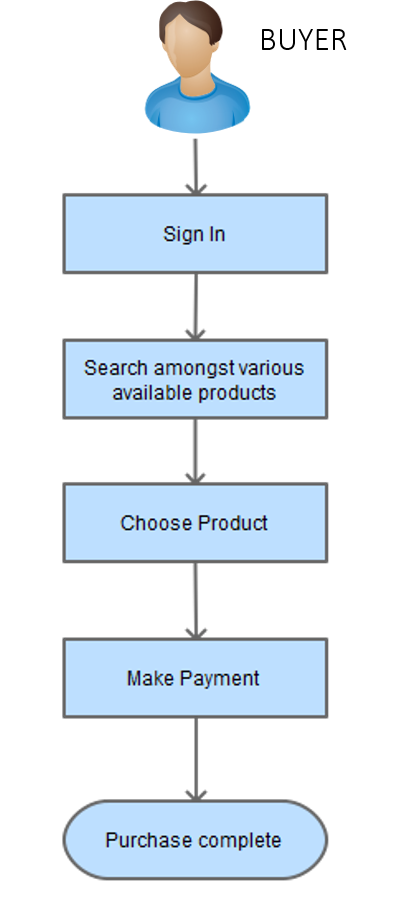
Users follow each other to see what they like, which amounts to the social character of the marketplace. With a link to the seller’s site, they can also add products they like to the marketplace.
Process Flow Diagram for Listing a product on the site:
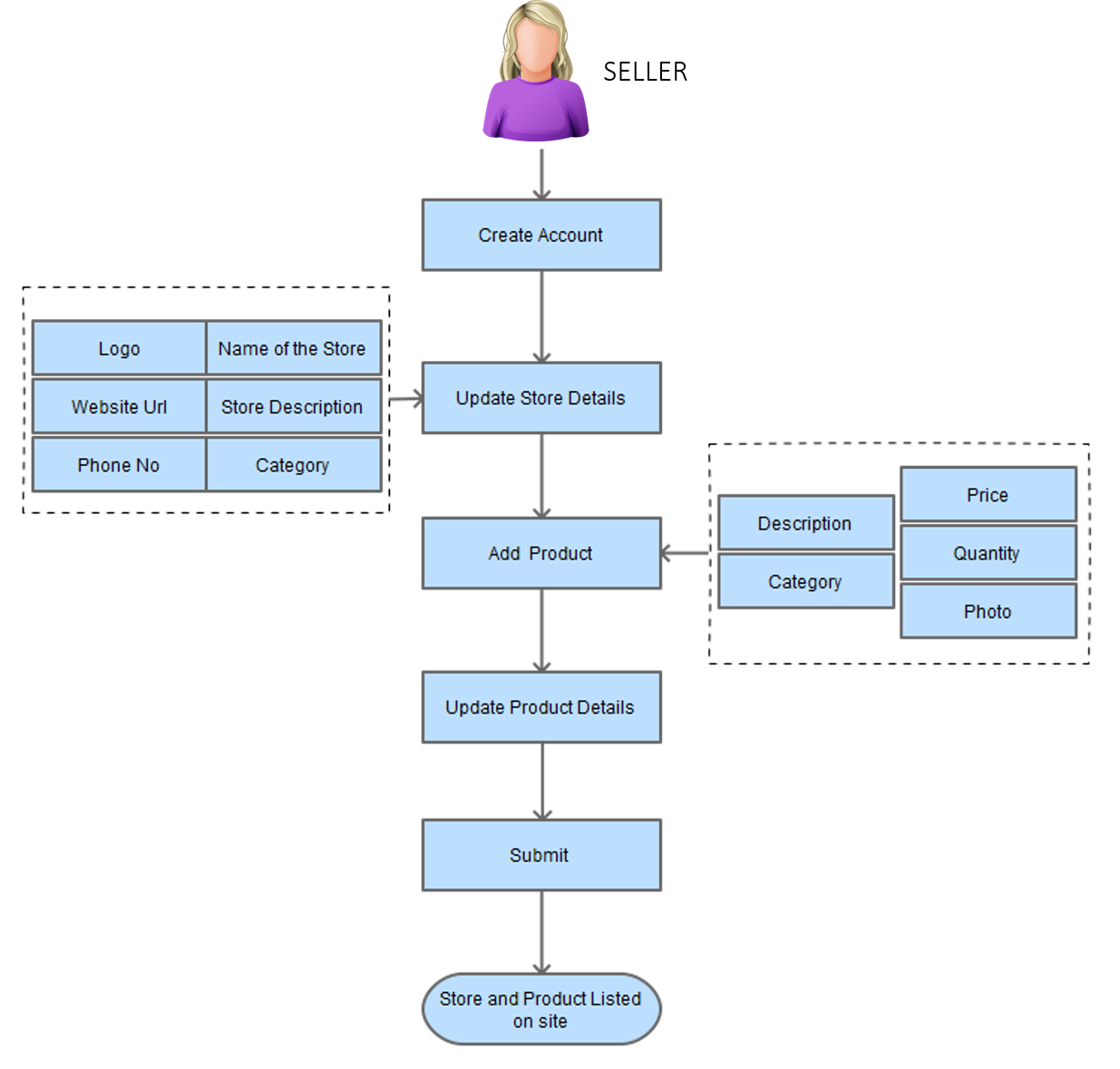 (CLICK TO ENLARGE)
(CLICK TO ENLARGE)
The marketplace also works with sellers and brands to build a following, in order to increase their sales and brand value. To taste success in the social sphere of ecommerce, one must have a good script first, which is certainly hard to find. If finding a social ecommerce script is difficult for you, the following feature analysis will definitely help:
Business & Revenue Model of Community-based E-commerce Marketplace
The business model of such a marketplace revolves around crowdsourcing and connecting buyers with sellers. The platform recommends relevant items to users as per their preferences. Collective social behavior and social signals are also a crucial part of such marketplaces. Hence, it would not be wrong to call it a product discovery and recommendation engine.
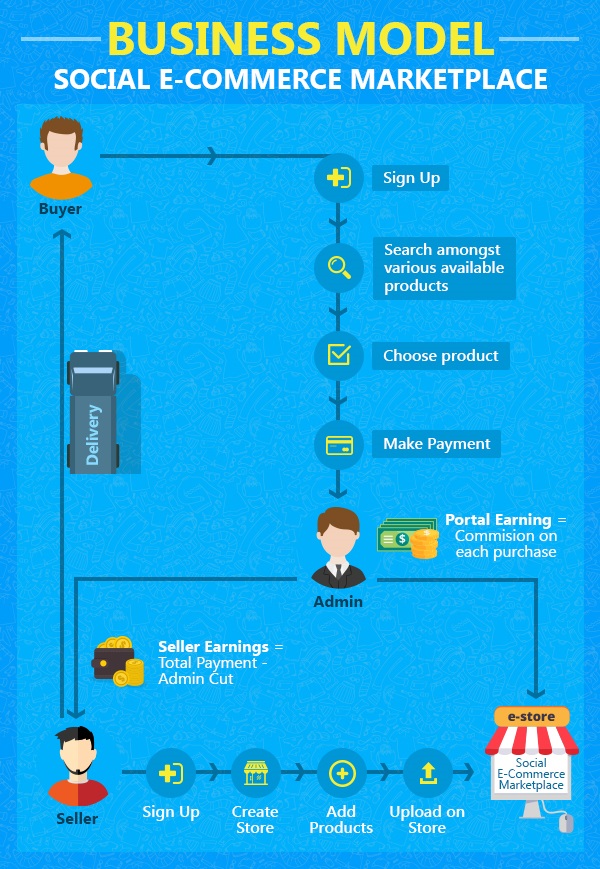
The buyers choose a product and make a payment, which is kept in an escrow account until the seller delivers the product to the buyer. After confirmation of the product delivery, the payment is released to the seller. The platform keeps a service charge on each transaction. Additionally, the platform can also charge merchants joining fees or a subscription plan to make more revenue. Other revenue streams include on page advertisements, as well as a featured listing.
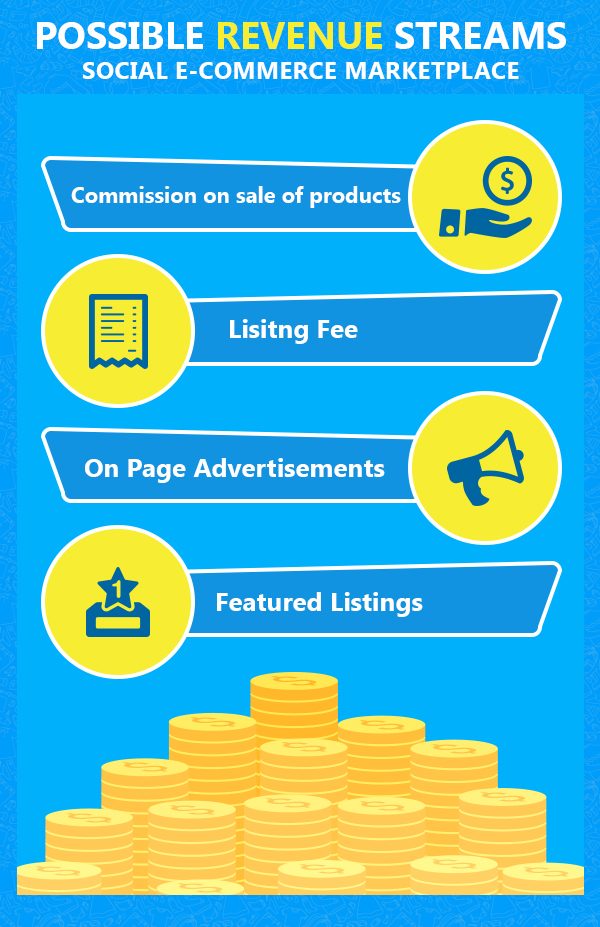
Major players in this market
Some of the most popular marketplaces working on such a business model are Fancy, which has raised $124.4 million, Wanelo ($14 million), Polywore ($22 million) and NUJI ($2 million). Now that we have a thorough understanding of the competitors, business and revenue model of such a marketplace let us take a look at the website features necessary to build a robust marketplace.
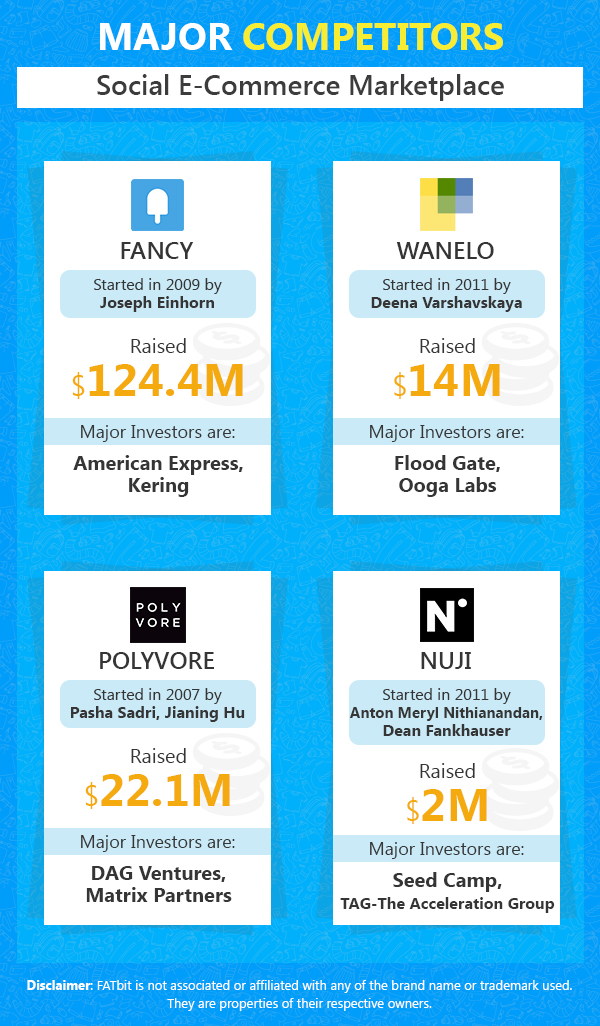
What is the Cost of Building a Socially Driven Ecommerce Marketplace?
Ask Experts
Website features
When it comes to an ecommerce website built on the social networking business model, one has to tread a fine line in order to keep both aspects in balance. The best parts of such websites are the celebrity users that make it popular. Besides that, users can also use it to share unique items. Before going into the practical details of different website features, let us look at the homepage design, as that’s the most vital aspect of a socially driven ecommerce website.
Distinctive homepage
Consider a social network that you use the most. The one thing where you spend most of the time is the social feed. Add that social feed to an ecommerce business model and you get a refined social ecommerce marketplace. However, in this case, your priority should not be to push items down the throat of the users but help them discover products, which they are more likely to purchase. In order to achieve that you need a distinctive homepage design. Let us look at some aspects of a unique homepage design.
Social feed
This is the core of a social ecommerce portal as it shows social quotient of recommendation engine. The feed updates automatically and shows products listed by members. The posts carry save, share, comment, and buy button. If you ever build a socially driven website, keep this in mind that all posts in social feed should be dynamically sized to make the overall user experience seamless.
Also Read: Want to Create a Fashion Driven Social Network? Check Out this Feature List
Recommendation engine
The backbone of every successful social network is its algorithm or recommendation engine, which promotes relevant posts to the top. In a social ecommerce marketplace, a recommendation engine would do wonders. This recommendation engine could be based on the likes of the consumers as well as browsing history. FATbit analysts highly recommend this feature in your ecommerce marketplace.
Trending items
This section houses all the trending items, which have been buzzing on the marketplace. Usually, this section is added to give an additional boost to the products, adding value to your marketplace. Make sure to add a separate tab on the homepage for the trending section to make it easy for the consumers to browse the trending items.
Editors pick
A socially connected ecommerce website needs to have in-house editors who can hand pick products and offer a curated list to the users. You can also tie up with celebrities and have a celebrity pick section rather than editor’s pick, giving you an additional advantage.
On Sale
You can even add a discounted section where some items can be put on fire sale. Ecommerce websites these days leverage upon discounts to entice consumers into buying things. Most of the popular ecommerce websites incorporate daily deals or fire sales, ensuring that the consumers are tempted to make purchases.
Social Login
One aspect of social network driven ecommerce marketplace is that you need to put in place a connected user base. The best possible way to achieve that is a “social login”. Using such an approach, you can ensure that every other user who creates an account connects with other users right from the start.
Also Read: 6 Creative Ways to Promote Your Product on Social Media
Search functionality
When there is a constant product updating in your account, sometimes it can become a daunting task to find a particular item, the user once saw. This is where search functionality comes into play. The ecommerce marketplace needs to have a robust search in place with autocomplete functionality, which not only shows items but also users and shops.
Build Your Ecommerce Marketplace without Investing Huge
Discuss Your Project
Store page
Any user or a brand can open a store in order to showcase their collection. The store page needs to be intuitive, and user engaging. There ought to be a banner image, which gives each store their unique identity. In addition to that, a follow button, along with the message as well as a sharing option is a must. The store profile can display the items in the grid with an option to filter the items as well as sort it as per the preference of the user.
Profile page
As observed by our analysts while reviewing top social commerce websites, most of the startups as well as the leading names have reserved profile page for each user, with their likes, saves and lists of items. This looks attractive in a socially connected marketplace and adds value to their business model.
Real-time popularity scores of an item
FATbit has been involved in the ecommerce arena for a long time, which has given it the much-needed competence. Over the years, we have found that one metric that can help businesses boost their sales is a popularity score of the item. Often it has been found that users often buy products that have great demand. You can also have an algorithm in place, which detects and showcases a popularity score of each item, making it easier for users to make an informed decision while buying.
Also Read: Business Model, Website Features Decoded to Launch Community Based Ecommerce Site
Multi-language and currency support
The Internet has made it easy for any platform to go global, without any hassle, but if a marketplace lacks essential features like multi-language and currency support, it fails to have a wide reach. FATbit suggests future entrepreneurs look for a script that offers robust multi-language and currency support and lets them build a user focused marketplace. This would offer much needed traction to cater to the global audience and help you expand exponentially.
Cart
The shopping cart is one of the most critical aspects of an ecommerce marketplace. Often it has been seen that users tend to not go ahead with purchase if the shopping cart does not have friendly UI. Moreover, users prefer to view real-time updates in their shopping cart.
Messaging
A social network is incomplete these days, without P2P communication. Messaging has also become a vital part for ecommerce marketplaces, where buyers can interact with sellers for more information on the product. FATbit analysts highly recommend this feature for a socially driven ecommerce marketplace.
The fact remains that the marketplaces that are committed to simplifying product discovery and buying have a bright future. In addition to it, socially driven ecommerce marketplaces enable a more connected user base, which not only interacts but also is more active. Are you yourself looking to launch a socially driven ecommerce marketplace?
Get in touch with our UX designers and pro developers to share your questions and get straight answers.
Do you have any question about Social Ecommerce Business not Answered here?
Send Your Query to Us







Comments (4)
 Khim Chen
Khim Chen
 FATbit Chef Post author
FATbit Chef Post author
 buy speakers online
buy speakers online
 shipmy
shipmy
I want to set up a social ecommerce apps in Vietnamese on ios and android platform. How much do you charge and what will be delivered. Thanks.
Hello Khim,
We would surely like to help you with the app development & to serve you better we would require more info about your project. Please share your requirements with us via https://www.fatbit.com/website-design-company/requestaquote.html
And our expert will get back to you 🙂
Regards,
FATbit Team
very nice information thank you for share with us….
good one